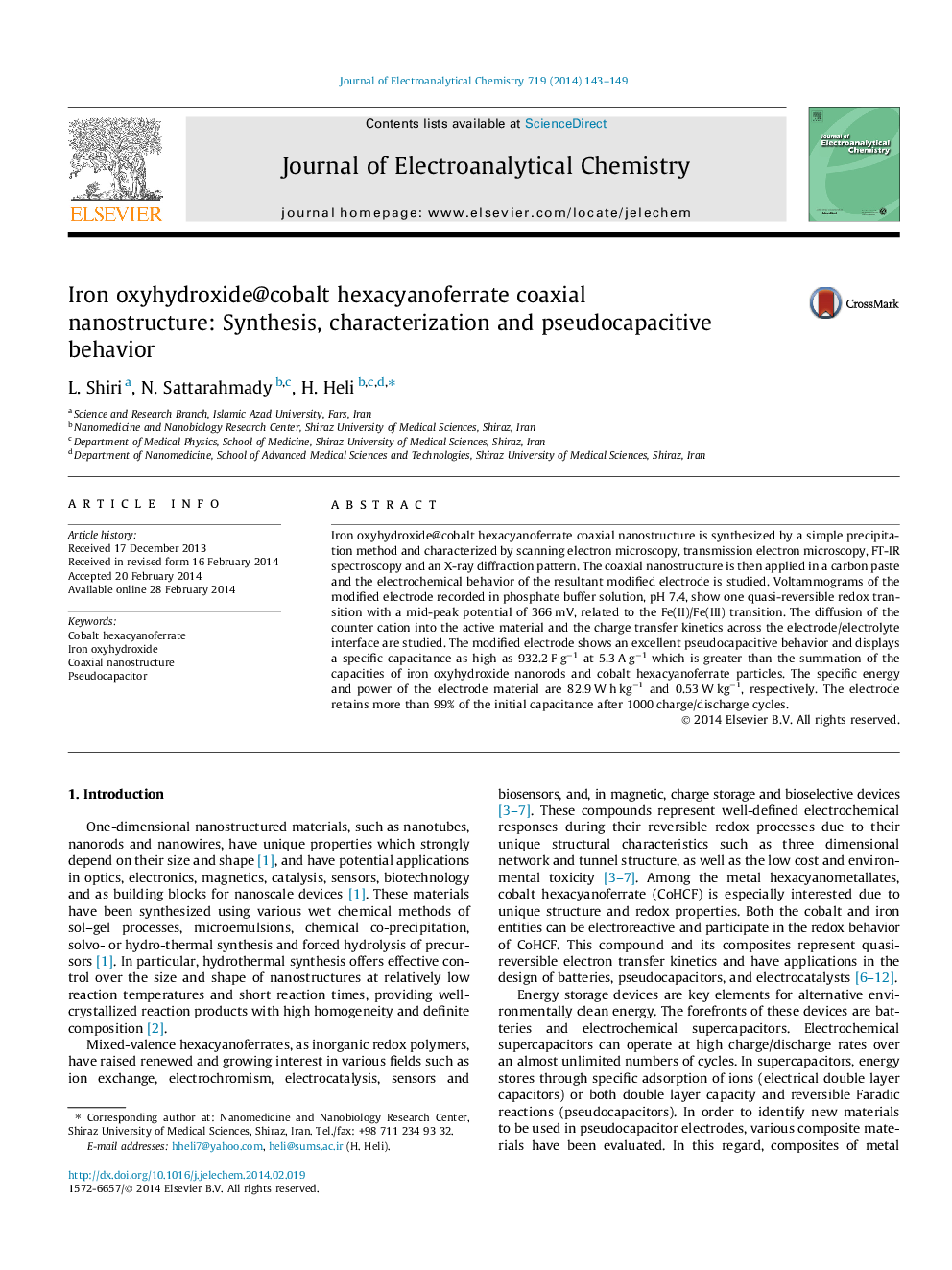| Article ID | Journal | Published Year | Pages | File Type |
|---|---|---|---|---|
| 218919 | Journal of Electroanalytical Chemistry | 2014 | 7 Pages |
•Iron oxyhydroxide@cobalt hexacyanoferrate coaxial nanostructure was synthesized.•The nanostructure showed an excellent pseudocapacitive behavior.•The electrode is biocompatible.
Iron oxyhydroxide@cobalt hexacyanoferrate coaxial nanostructure is synthesized by a simple precipitation method and characterized by scanning electron microscopy, transmission electron microscopy, FT-IR spectroscopy and an X-ray diffraction pattern. The coaxial nanostructure is then applied in a carbon paste and the electrochemical behavior of the resultant modified electrode is studied. Voltammograms of the modified electrode recorded in phosphate buffer solution, pH 7.4, show one quasi-reversible redox transition with a mid-peak potential of 366 mV, related to the Fe(II)/Fe(III) transition. The diffusion of the counter cation into the active material and the charge transfer kinetics across the electrode/electrolyte interface are studied. The modified electrode shows an excellent pseudocapacitive behavior and displays a specific capacitance as high as 932.2 F g−1 at 5.3 A g−1 which is greater than the summation of the capacities of iron oxyhydroxide nanorods and cobalt hexacyanoferrate particles. The specific energy and power of the electrode material are 82.9 W h kg−1 and 0.53 W kg−1, respectively. The electrode retains more than 99% of the initial capacitance after 1000 charge/discharge cycles.
